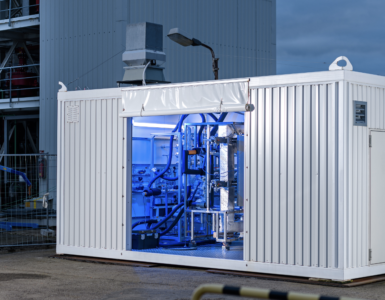CATF – Allow hydrogen storage to receive credits under 48E regardless of ultimate end use.
Limiting 48E eligibility to hydrogen storage used for power applications is not required by the statute and is difficult to administer.
Hydrogen storage should qualify for the section 48E investment tax credit (ITC) irrespective of the ultimate end use of the stored hydrogen. Treasury’s proposed guidance limits the credit to the storage of hydrogen “that is solely used as energy and not for other purposes such as for the production of end products such as fertilizer.” However, the statute does not require a particular end use for the stored hydrogen. Other types of energy storage property under the statute must be property that “receives, stores, and delivers energy for conversion to electricity.” But the plain text calls out hydrogen storage as exempt from the requirement of being used “for conversion to electricity,” providing instead that hydrogen (and the property that is “integral” to its storage) need only “store[] energy.” Thus, the end use limitation for eligibility is counter to the plain text of the statute.
Restricting eligibility by hydrogen end use is also difficult to administer, because hydrogen storage operators have limited mechanisms to track hydrogen after it exits their facility. A storage operator would need visibility over all associated transportation infrastructure (i.e., pipes and trucks transporting hydrogen to and from the facility) to accurately trace hydrogen end uses. This can only come from ownership of both transportation and storage infrastructure—an unlikely scenario given how expensive it would be—or if the storage operator gains access to the transportation data—an equally challenging endeavor due to data security concerns.
The Solution
Hydrogen storage should receive credits under 48E regardless of where the hydrogen is used.
Building out hydrogen storage infrastructure is vital to meeting our decarbonization goals. Clean hydrogen’s greatest decarbonization potential is in hard- to- abate sectors that require reliability (e.g., refining, steel, and heavy-duty trucking). For these industries, each hour of insufficient supply of raw materials or fuel translates to lost revenue. Widespread and cheap hydrogen storage will provide certainty for these producers to transition toward clean hydrogen as opposed to relying on dirtier but more available sources of hydrogen. This is especially important for end users seeking to rely on clean electrolytic hydrogen production that hourly-matches energy attribute certificates from variable renewable energy. Hydrogen storage will reduce the variable nature of renewable energy. Treasury should ensure the section 48E ITC promotes the buildout of clean hydrogen storage.
READ the latest news shaping the hydrogen market at Hydrogen Central
CATF – Allow hydrogen storage to receive credits under 48E regardless of ultimate end use. source









